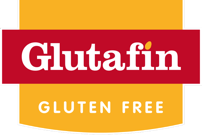
If you or someone you love has been recently diagnosed with coeliac disease, you could be eligible to receive gluten free foods on prescription. Simply select your country of residence, and, if you live in England, fill in your postcode to check if your area is prescribing.
Your country is prescribing gluten free foods*. Request your Glutafin Taster Box by clicking the button below to sign up.
* Please note: local policies are constantly updated, and issuing a prescription is at the discretion of your GP.

As part of the activities around Fibre February, we asked Glutafin dietitian, Katie Kennedy, to explain the importance of fibre in our diet and why eating enough fibre can be a problem for people who only eat gluten free foods.
Fibre is a type of carbohydrate. Most types of carbohydrate are broken down in the gut to make smaller sugar molecules that are absorbed by the body to provide energy. However, fibre cannot be broken down and therefore passes through the gut undigested. Along the way, fibre performs a number of important jobs.
Fibre is often categorised as soluble fibre (usually found in fruit and oats) or insoluble fibre (usually found in wholegrains and nuts). Most foods contain both types of fibre, and both types of fibre are essential for keeping us healthy.
Fibre is important because it plays a vital role in:
All adults should aim to eat at least 30g fibre every day. Currently, only 9% of adults in the UK are eating enough fibre.
Fibre comes from plant-based foods, including cereal grains, nuts and seeds, in addition to foods made from these. Fruit, vegetables, potatoes and legumes (peas, beans and lentils) are also an excellent source of fibre. For example you’ll find 5g of fibre in a single pear, two slices of Glutafin gluten free white bread, three table spoons of baked beans or a medium-sized jacket potato with the skin on.
It can be challenging to eat enough fibre when you are only eating gluten free foods because a gluten-free diet requires you to avoid wheat, rye and barley. These grains and the foods that contain them, are good sources of fibre. You also have to avoid oats when following a gluten free diet, because they are often contaminated with gluten during growing and processing.
Fortunately, there are many naturally high fibre gluten-free grains/ cereals available to choose from, for example brown rice, buckwheat, quinoa, millet and sorghum. Some of these are used in the high fibre versions of Glutafin’s gluten free foods on prescription, providing an easy way to boost your fibre intake. You can also eat oats if they are labelled specifically as gluten free. Gluten-free oats are a great source of fibre.
Eating 30g of fibre every day can seem like a daunting task, but it might not be as difficult as you think. Here are some simple ideas to help boost your daily fibre intake:
Every little helps, and these small increases in the fibre content of your food will soon add up to make a big difference to your health.
Thanks to Katie for her input on this important topic. Remember, even if you’re restricted to only eating gluten free foods, it’s still important to maintain a healthy level of fibre in your diet, not just during Fibre February, but all year round.
If you have any questions for Katie about gluten free diets or gluten free foods, please get in touch. We’re always happy to help to inform and educate the Glutafin community.
If you or someone you love has been recently diagnosed with coeliac disease, you could be eligible to receive gluten free foods on prescription. Simply select your country of residence, and, if you live in England, fill in your postcode to check if your area is prescribing.
Your country is prescribing gluten free foods*. Request your Glutafin Taster Box by clicking the button below to sign up.
* Please note: local policies are constantly updated, and issuing a prescription is at the discretion of your GP.
Share this now: